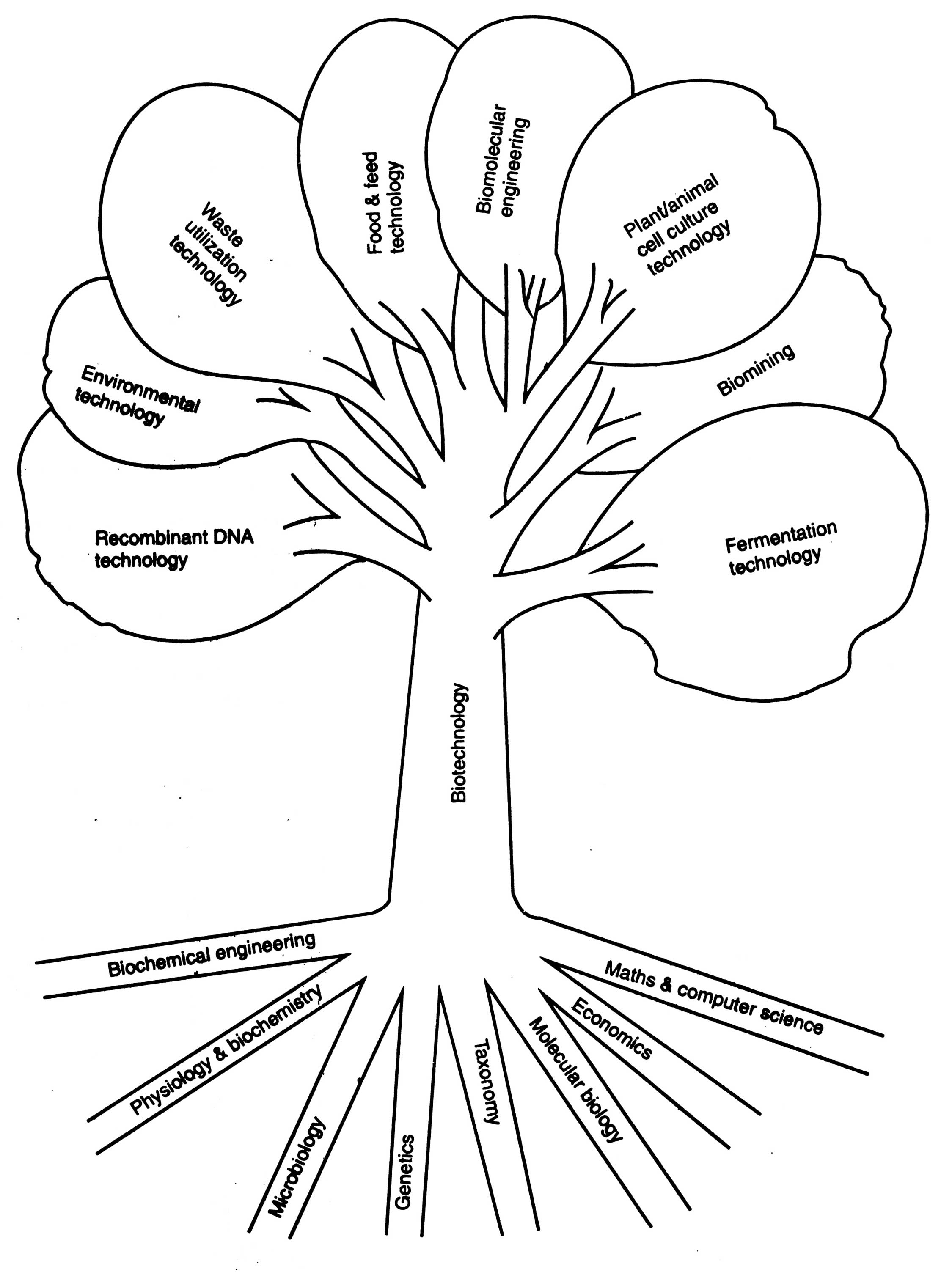Introduction to Biotechnology
» Scope & Importance
During 1970s, biotechnology emerged as a new discipline, as a result of marriage of biological science with technology. It has been possible due to revolutionary discoveries made in these two areas. Biotechnology is not a pure science, but an integrated effort of these two, the root of which lies in biological science. Biotechnology is defined by different organizations in different ways. It has been broadly defined as, "the development and utilization of biological processes, forms and systems for obtaining maximum benefits to man and other forms of life". Biotechnology is "the science of applied biological process" (Biotechnology : A Dutch Perspective, 1981).
Following are a few definitions given by other organizations :
Biotechnology is the application of scientific and engineering principles to the processing of materials by biological agents to provide goods and service. [The Organization for Economic Cooperation and Development (OECD), 1981].
The integrated use of biochemistry, microbiology and engineering sciences in order to achieve technological application of the capabilities of microorganisms, cultured tissue, cells, and parts their of [The European Federation of Biotechnology (EFB), 1981; O'Sullivan, 1981].
The application of biochemistry, biology, microbiology and chemical engineering to industrial process and products and on environment [International Union of Pure and Applied Chemistry (IUPAC), 1981.]
In the definition given by OECD, "scientific and engineering principles" refer to microbiology, genetics, biochemistry, etc. and "biological agents" mean microorganisms, enzymes, plant and animal cells. The meaning of these three definitions and others given by many organizations are more or less similar.
A unified definition of genetic engineering has been given by Smith (1996) as "the formation of new combinations of heritable material by the insertion of nucleic acid molecules produced by whatever means outside the cell, into any virus, bacterial plasmid or other vector system so as to allow their incorporation into a host organism in which they do not naturally occur but in which they are capable of continued propagation.
Although involvement of yeasts in alcohol production was known since the time of Louis Pasteur, yet detailed studies were made during 1900s. In 1920, for the first time, the Leeds City Council, U.K. established the Institute of Biotechnology. In the late 1960s, OECD was set up to promote policies for sound economic growth of the member countries. In 1978, European Federation of Biotechnology was established. Until 1970s, the efforts made by microbiologists, molecular biologists, geneticists, biochemists, medical scientists, biochemical engineers, agriculture scientists, virologists, etc. led to reach their respective disciplines to the zenith.
Table: Biotechnology-derived drug products.
| Products | Manufacturers |
| Human insulin | Eli Lily, Novo Nordisk, Hoechst |
| Growth factors | Eli Lily, Novo Nordisk, Genetech, Pharmacia |
| Blood factors | Amgen, J & J, Sankyo, Chugai, Sandoz, Immunex |
| Interferon | Roche, Wellcome, Daiichi, Sumitomo |
| Monoclonal antibodies | J & J, Cytogen |
| Vaccines | Smithkline, Merk, Shionogi |
Please Note: We dont not endorse any of the above company.
Table: Approved biotech diagnostics.
| Type | Infectious disease |
Tumor marker |
Analyte & drug |
Blood screening |
Total |
| Monoclonal antibody | 127 | 2 | 433 | 9 | 571 |
| DNA probe | 42 | 0 | 11 | 0 | 55 |
| Recombinant DNA | 11 | 1 | 1 | 0 | 13 |
| Total | 180 | 3 | 445 | 9 | 637 |
It is, therefore, interesting that the scientists are engaged in doing the most challenging task of mass production of growth hormones, insulin, vaccines, immunogenic proteins and polypeptides, gene therapy, biofertilizers, biopesticides, producing disease and stress-resistant plants, biomass, enzymes, antibiotics, acids, fuels, etc. Many biochemical companies such as National Pituitary Agency (U.S.A.), E. Lilly (U.S.A.), Kabi Vitram A B (Sweden), Genetech Co. (U.S.A.), Biogen (Switzerland), etc. are producing/trying to produce some of the above products by using genetic engineering techniques. Many Nobel Laureates including Dr. Har Govind Khorana, are associated with these companies.
Many countries have developed collaborative networks on several aspects such as "Regional Microbiology Network for South-East Asia" (supported by Japan and UNESCO). "Microbiological Resource Centers" (MICRCENS) [supported by UNESCO]; United Nations Environmental Programmes (UNEP), International Cell Research Organization (ICRO). These two organizations have participations of groups in many countries.





